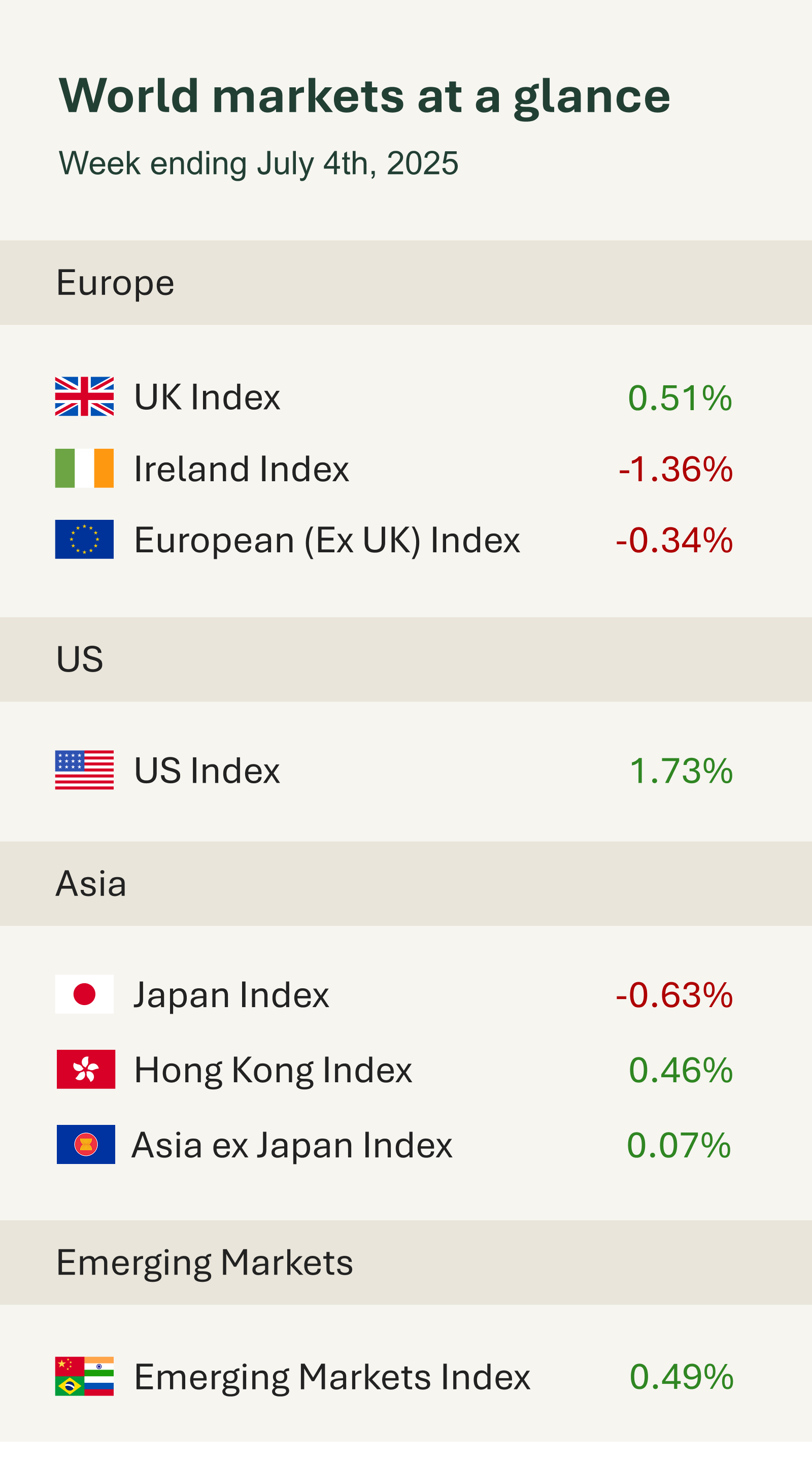As you can see from the accompanying table, markets were mixed this week. It was relatively quiet, with only a few pieces of economic data to digest and U.S. traders off for the Fourth of July holiday on Friday. US stocks rose strongly on Thursday ahead of the long weekend and after labour market data came in above expectations. Also, after market closed on Thursday, President Trump signed into law a sizable package of spending and tax cuts after the so called “Big Beautiful Bill” was approved at the House of Representatives by narrow margins. The bill, which will solidify the implementation of his 2017 tax cuts, is heralded by Republicans as essential for economic growth.
On Thursday, U.S. jobs data presented a mixed picture. The latest reports highlighted that the US is still an economy in which businesses are willing to hire, with 147,000 jobs being added in June. However, nearly half of these gains came from the government sector, suggesting that headwinds are currently present within certain facets of the private sector. Meanwhile, the unemployment rate edged down to 4.1% from 4.2% in May, a positive figure though partly shaped by people leaving the labour force. In response, market participants have scaled back expectations for an interest rate cut at the Federal Reserve’s July meeting, with the probability falling from 24% to just 5%.
There was also labour market data from the Euro area. Unemployment in the Eurozone rose slightly in May to 6.3%, up from a record low of 6.2% in April. However, this represents only a modest increase in a region that has not, historically, faced significant difficulties in filling job vacancies. While solid wage growth has remained a persistent concern for inflationary pressures, economists expect it to moderate by the end of the year. For now, though, labour market tightness continues to be a point of contention. This comes at a time when businesses are already contending with uncertainty stemming from ongoing trade tensions and ambiguity around tariffs, complicating planning and investment decisions.
Adding to the picture industrial producer prices in the Eurozone fell by 0.6% in May, following a sharper 2.2% drop in April. While energy prices were the main driver of the decline, producer prices excluding energy edged up by 0.1%, signalling subtle underlying cost pressures. Taken together with labour market data, this suggests that while headline inflation may be easing, underlying domestic cost dynamics remain mixed. The European Central Bank is therefore likely to view the latest figures as further evidence that inflation is on the right path, but not yet fully tamed.
President Donald Trump’s 9th July trade deadline is drawing near, with negotiations intensifying as economies race to finalise trade agreements. However, markets appear relatively calm in the face of the looming deadline.



